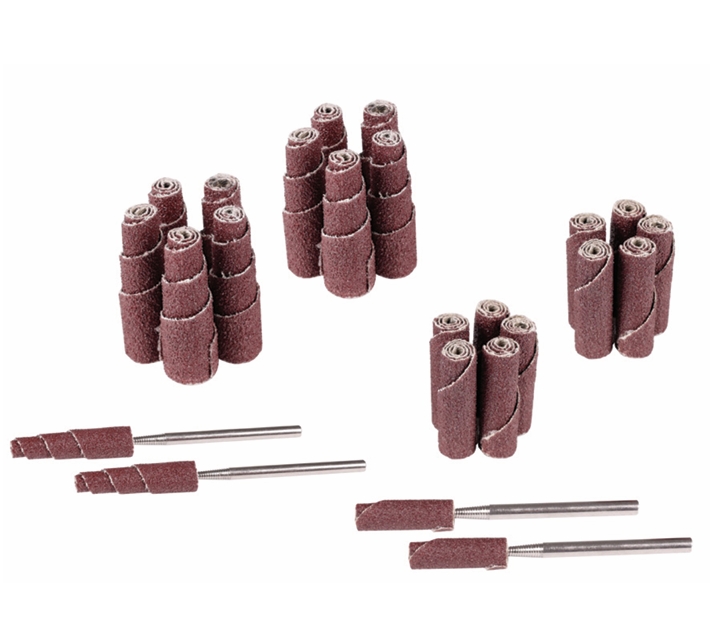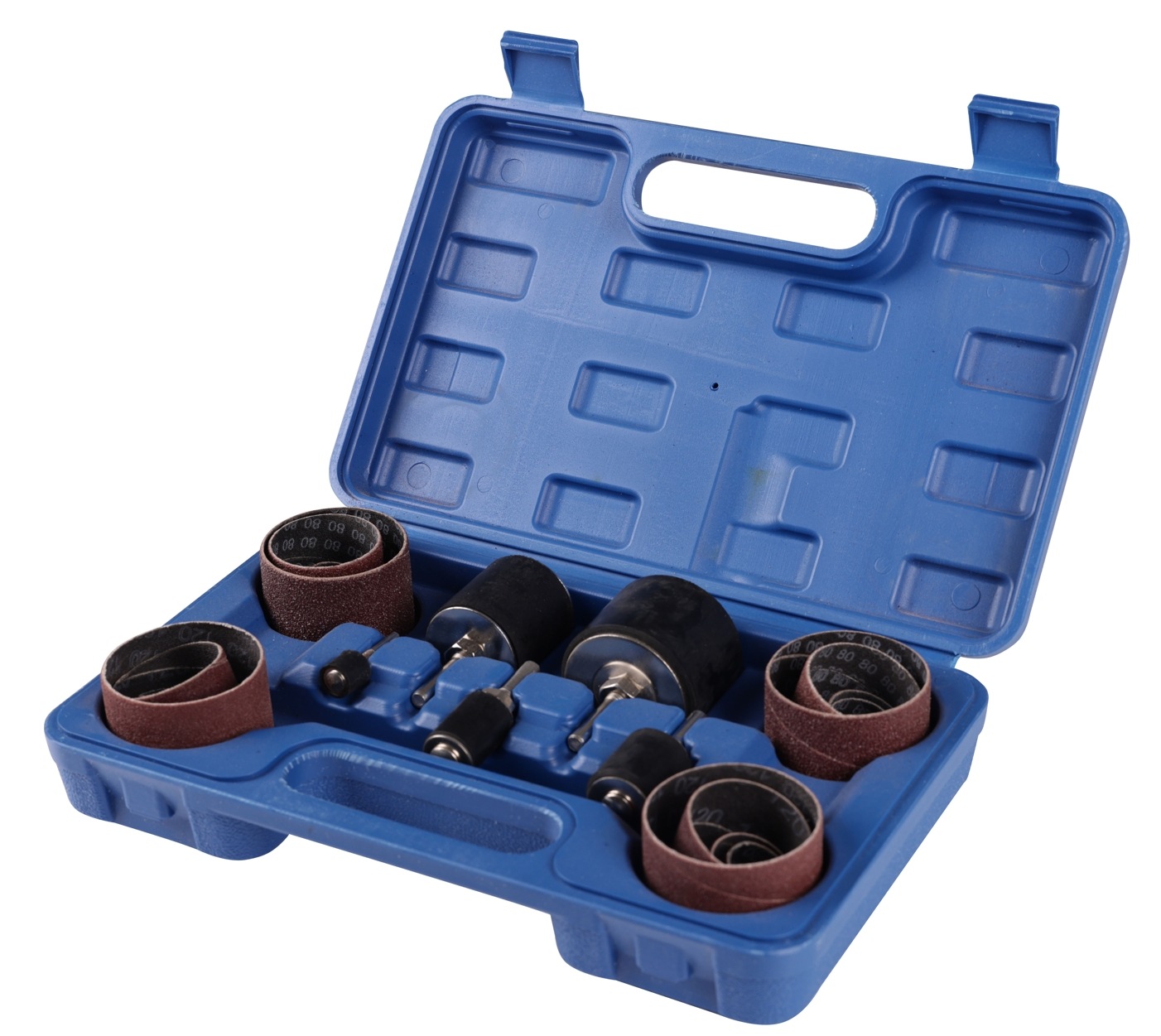Sanding cones have become necessary tools in delivering fine finishes to surface preparation and precision crafting. Handy in the treatment of different materials, they help to smooth rough surfaces, eliminate imperfections, and make a surface ready for further treatment or painting. They can be handy while working with wood, metal, plastic, or composite materials. This article will highlight information on their uses, types available in the market today, benefits accrued from using them, as well as maintenance tips; thus appealing that they should form part of every toolkit.
What Is a Sanding Cone?
A sanding cone is a cone-shaped abrasive tool used for reaching inaccessible spots or for detail work. It has an abrasive material-paper, cloth, or any other grinding material-wrapped over a cone-shaped core. The conical shape permits its use in those places where space does not allow the entry of flat pads or discs on corners or curves.
The Evolution of Sanding Tools
Over time, sanding tools have changed as the needs of different industries and home users have also changed. From the common traditional sandpaper to more advanced tools available today, such as orbital sanders, belt sanders, and now sanding cones. Precision, efficiency, and flexibility in use are features that make these tools indispensable for surface fine-tuning.

Types of Sanding Cones
There is no one-size-fits-all when it comes to sanding cones. Depending on the material you’re working with and the complexity of the project, there are several types of sanding cones to choose from.
1. Standard Sanding Cones
Over time, sanding tools have changed as the needs of different industries and home users have also changed. From the common traditional sandpaper to more advanced tools available today, such as orbital sanders, belt sanders, and now sanding cones. Precision, efficiency, and flexibility in use are features that make these tools indispensable for surface fine-tuning.
2. Diamond Sanding Cones
For tougher materials, diamond sanding cones are often the go-to choice. Diamond abrasives are much harder than traditional sandpapers, making them suitable for sanding hard metals, ceramics, and stone. These cones are typically used in industries where precision and durability are paramount.
3. Flap Sanding Cones
Flap sanding cones are designed with overlapping layers of abrasive material, allowing for a more gradual and controlled sanding process. These are excellent for both light sanding and heavy-duty material removal. The flaps provide greater surface contact, ensuring a smooth and even finish.
4. Felt Sanding Cones
Felt sanding cones are used for polishing rather than sanding. They are often employed in metalworking and jewelry making to achieve a high-gloss finish on materials like brass, aluminum, or silver. The soft, cushioned surface of felt allows for gentle polishing without damaging the underlying material.
5. Ceramic Sanding Cones
Ceramic sanding cones are made of ceramic abrasive grains. These grains are durable and can resist heat for a long period of time. Ceramic sanding cones are effective when used to sand high-tensile materials such as stainless steel or titanium. The ceramics used in making these cones last for a long time, hence the preference by heavy-duty and longevity-requiring industries.
Key Benefits of Using Sanding Cones
Sanding cones offer several distinct advantages compared to traditional sanding methods. Understanding these benefits will help you appreciate why they’re such a valuable tool in various applications.
1. Access to Tight Spaces
Sanding cones get into all the tight and difficult spots. The conical shape permits sanding in corners, along edges, and involves details whereby other tools cannot reach. This makes them suitable for fine detailed work on furniture, automotive parts, and decorative objects.
2. Precision and Control
Sanding cones provide superior control over the sanding process, which is especially important when working on delicate surfaces or intricate designs. The shape and design allow for more focused sanding, leading to more accurate results and less risk of damage to the material.
3. Versatility
Sanding cones can be used on a wide range of materials, making them versatile for different tasks. From woodworking and metalworking to automotive and craft applications, these tools can tackle a variety of sanding challenges, making them a go-to for both professionals and hobbyists.
4. Improved Finish Quality
With their ability to provide even and controlled sanding, sanding cones are excellent for achieving a smooth, high-quality finish. Whether you’re preparing a surface for painting or simply smoothing out rough edges, sanding cones deliver consistent results.
5. Efficiency
Using sanding cones can increase your overall efficiency by reducing the need for multiple passes or tool changes. The focused sanding action, especially when using high-quality abrasive materials, allows you to complete the job faster and with less effort.
Applications of Sanding Cones
The uses for sanding cones are virtually limitless, making them a highly versatile tool in many industries. Below are some common applications where sanding cones prove essential.
1. Woodworking
In woodworking, sanding cones are used for detailed sanding tasks, such as smoothing out intricate edges, corners, and curves. Whether you’re building furniture or crafting small decorative pieces, a sanding cone allows for precision sanding without leaving behind noticeable scratches or marks.
2. Metalworking
Sanding cones are indispensable tools in metalworking, where precision is key. These tools are used to smooth welds, remove burrs, and prepare metal surfaces for painting or coating. Diamond sanding cones, in particular, are well-suited for sanding hard metals like steel and aluminum.
3. Automotive Repair
In the automotive industry, sanding cones are used to refine and smooth surfaces, especially in areas that are difficult to reach with flat sanding pads. Whether you’re working on the body of a car, engine parts, or trim, a sanding cone can help achieve a smooth finish for optimal paint adhesion.
4. Jewelry Making
For jewelry makers, sanding cones, especially felt cones, are used to polish and finish metal surfaces. They provide a high-gloss finish on precious metals like gold, silver, and platinum without causing damage, ensuring a professional and high-quality appearance.
5. Model Making and Crafts
Sanding cones are also favored in model making and other crafts. They allow hobbyists to achieve fine detailing on miniature models, whether they are working with plastic, resin, or other materials. The precision offered by sanding cones is perfect for creating smooth, detailed finishes on small-scale projects.
How to Use Sanding Cones Effectively
While sanding cones are relatively easy to use, achieving the best results requires proper technique. Below are some tips on how to use sanding cones effectively:
1. Select the Right Abrasive Material
Choosing the right abrasive material for your sanding cone is crucial to achieving the desired finish. For example, use a fine-grit sanding cone for polishing and a coarse-grit cone for material removal. The type of material you’re working with will also influence the type of abrasive you should use.
2. Maintain Proper Speed
When using power tools with sanding cones, it’s important to control the speed. Too high a speed can cause excessive heat buildup, leading to damage to both the tool and the material. Generally, use a medium speed for a balanced sanding effect.
3. Keep the Tool Moving
To avoid uneven sanding or gouging, keep the sanding cone in motion while working. Don’t allow the cone to stay in one spot for too long, as this can create indentations or uneven surfaces.
4. Use Light Pressure
Applying light pressure allows the sanding cone to do the work. Heavy pressure may damage the material or cause the cone to wear down prematurely. Instead, let the abrasive do the job by gently guiding the cone across the surface.
Maintenance and Care of Sanding Cones
Proper care and maintenance of your sanding cones will extend their lifespan and ensure optimal performance. Here are some tips to keep your sanding cones in top shape:
1. Clean Regularly
After each use, clean the sanding cone to remove any accumulated debris. You can use a soft brush or compressed air to clear the abrasive surface, ensuring it continues to perform at its best.
2. Store Properly
Store your sanding cones in a dry, cool place to prevent them from becoming damaged or warped. Avoid storing them in areas with high humidity, as this can degrade the abrasive material.
3. Inspect for Wear
Check the sanding cones regularly for signs of wear. If the abrasive material begins to wear down or lose its effectiveness, it’s time to replace the cone to maintain optimal performance.
Sanding cones are the best tools to get that final smooth surface on different materials. They are versatile; they last long, are precise, and capable of getting into those very small areas. Sanding cones come in different types with several advantages attached to each type. Knowing how to properly use and take good care of them will make finished work always come out neat, hence high-quality results.



